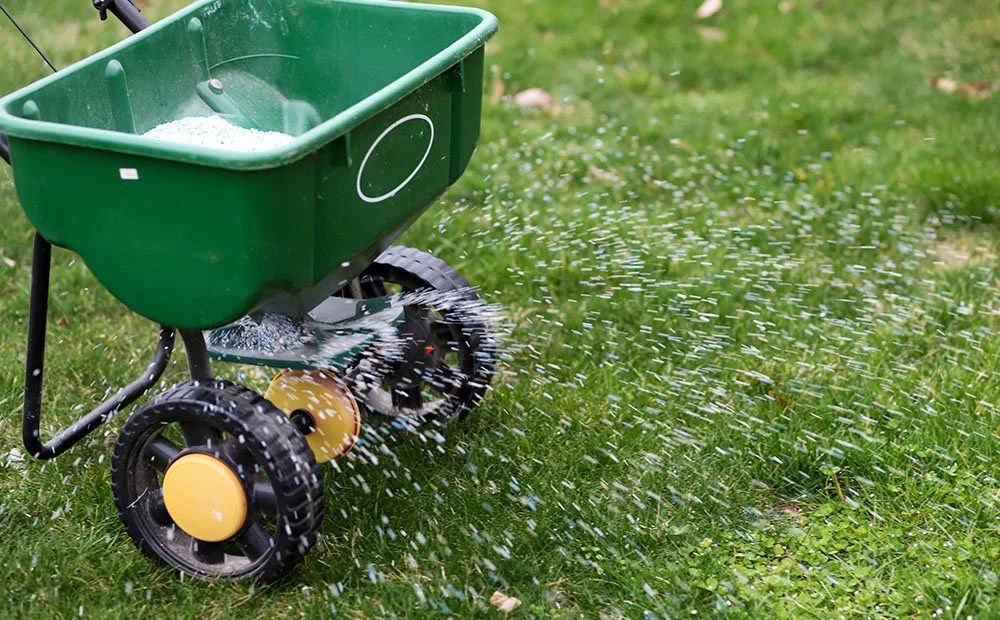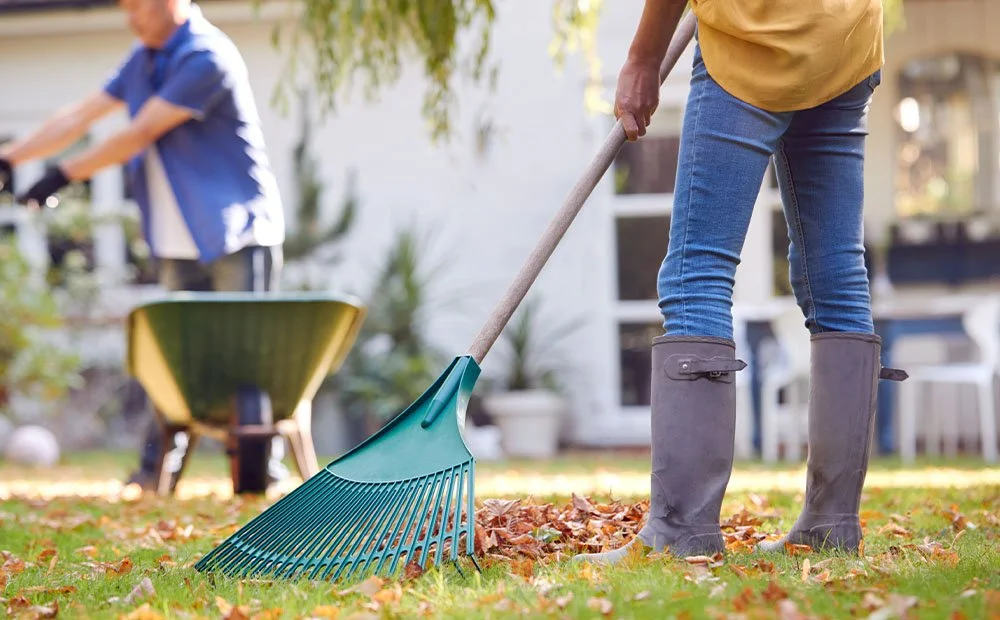THE ULTIMATE FALL LAWN CARE GUIDE FOR INDIANAPOLIS
Fall is here! We know you’re all juggling back-to-school season, harvesting your long-awaited vegetable crops, and getting ready for the upcoming holidays. However, you don’t want to neglect your necessary fall lawn care! We put together this guide so you can get your landscape cleaned and prepped for winter and have a gorgeous, lush lawn in the spring.
Follow This Fall Care Guide for a Lush, Green Lawn in 2023!
It might be tempting to leave your lawn care until spring, but all that leftover plant debris combined with melting snow will result in a big, unsightly mess! By going through these fall lawn care tasks, you can prevent all sorts of potential long-term problems and ensure your lawn is healthy and ready for another successful year.
Dethatch the Lawn
Use your rake to tear up the tangled, matted patches of grass; this will make it so much easier for new grass to emerge in spring! Simply pull the rake across the grass while applying light pressure to rip up those tangles.
Aerate the Soil
Foot traffic, rain, snow, and time all contribute to soil compaction. When soil compacts, moisture doesn’t drain through properly, and the water will pool at the root level. Most plants hate having soggy roots, which can often lead to root rot—a dreadful condition that’s hard to fix! Aerating the soil helps loosen it up and introduces oxygen to improve moisture drainage.
You can use either the spike or plug method to aerate your soil. Spike aerators use pointy spikes to drive holes into the soil. Plug aerators pull thicker, cylindrical plugs of soil out from the ground. Both options work great.
Don’t Stop Watering!
Once fall rolls around, many folks get tired of watering their lawn and landscape plants. Since the sun isn’t as hot and the grass isn’t growing much, you can get away with watering your lawn less, but you certainly don’t want to stop altogether. If we aren’t getting much rain, give your lawn a thorough watering every 10–14 days through fall before the ground freezes.
Use Fall Lawn Fertilizer
Many of our landscape plants shouldn’t be fertilized in fall, as this scrambles their natural growth and dormancy cycle. However, grass doesn’t behave in the same way! The foliage will die off in winter no matter what, so it soaks up the nutrients and puts it towards root growth instead of growing longer leaves. When the ground freezes, the remaining nutrients will help supercharge new growth the following spring. We recommend applying fertilizer about six weeks before the ground freezes, and three weeks before the freeze is the absolute latest you can fertilize.
Leaf Removal
If you have mature trees on your lawn that drop a thick layer of leaves, you’ll definitely want to rake those up before the snow falls. A heavy, soggy layer of leaves can be a breeding ground for harmful bacteria, and it’s a real nuisance to clean in the spring. However, if you only have a light sprinkling of leaves across the lawn, you can leave them be! They’re incredibly useful for hibernating pollinators who need a sheltered spot to sleep for the winter.
Need any tools or products for lawn care in Indianapolis? Dammann’s Garden Co. has you covered! If you have any questions about how to proceed with your fall lawn and garden prep, our experts can guide you through all the necessary steps to make things as easy and fuss-free as possible.





